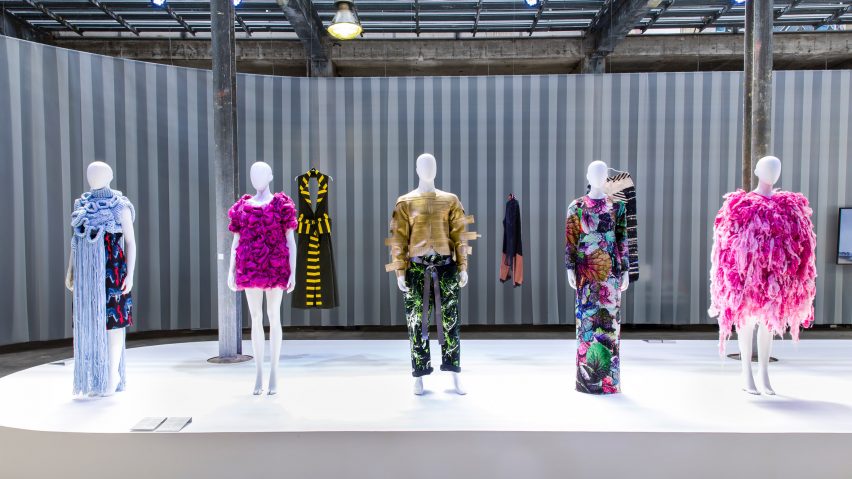
"The fashion system is very much in transition" says State of Fashion curator José Teunissen
There are 50 examples of sustainable fashion on show in the Netherlands for the inaugural State of Fashion exhibition, including textiles created from salvaged plastic bags and shoes made of fish skins. In a Dezeen exclusive, curator José Teunissen reveals her highlights.
Currently on show at De Melkfabriek in Arnhem, State of Fashion 2018: Searching for the New Luxury explores how fashion can more sustainable, through the introduction of new techniques and innovative technologies.
Featuring works by Vivienne Westwood and Stella McCartney, as well as emerging studio like Orange Fiber and Rafael Kouto, the exhibition is a response to the major upheaval the industry is facing, as customers become increasingly aware of how wasteful and exploitative it is.
"It's a fundamental rethinking of what fashion is," explained Teunessen, who is dean of design and technology at the London College of Fashion.
"There are no real trends anymore"
"We know that the fashion system is very much in transition," she told Dezeen. "We all know that it's very polluting. Consumers are becoming more and more aware that clothes are made in bad working conditions."
She said that the pace of manufacturing has intensified because fast fashion brands have to produce new collections every six weeks. "There are no real trends anymore. It's just a push market where people just try and launch things in the market. It's very wasteful."
Teunessen's exhibition revolves around a manifesto, which tries to define what fashion's new luxury might be. Eight hashtags – #imagination #agency, #essential, #tech, #care, #reuse, #fairness and #no waste – accompany the project descriptions.
Searching for the new luxury in fashion
"It is called Searching for the New Luxury because we don't have an answer yet," said Teunessen.
"The new luxury is about imagination and coming up with new ideas, and a new universe that matches better with our daily lives and values. It's about agency and taking control."
State of Fashion is a new quadrennial fashion event, replacing the Arnhem Fashion Biënnale. The inaugural edition continues until 22 July 2018.
Here are Teunissen's five highlights from the show:

We Are Not Sheep by VIN + OMI
London-based fashion and multimedia studio VIN + OMI is a pioneer of sustainable fashion that has been developing eco-textiles since 2004. Its latest collection, We Are Not Sheep, reflects the duo's passion for tackling environmental issues.
"They are very interesting because they don't call themselves a brand, but an ideology," Teunissen told Dezeen. "They work primarily with supporting local communities and developing textiles from waste materials. They support river clean-up projects in Shanghai and New York. They are about to develop one in London with plastic waste from the River Thames."
VIN + OMI has produced 12 unique fabrics, four of which are exhibited: rPET, a textile from salvaged ocean plastics; sustainable (and biodegradable) latex supporting communities in Malaysia; no-kill fleece obtained from pet llamas; and 4Ganic, a plant fabric.
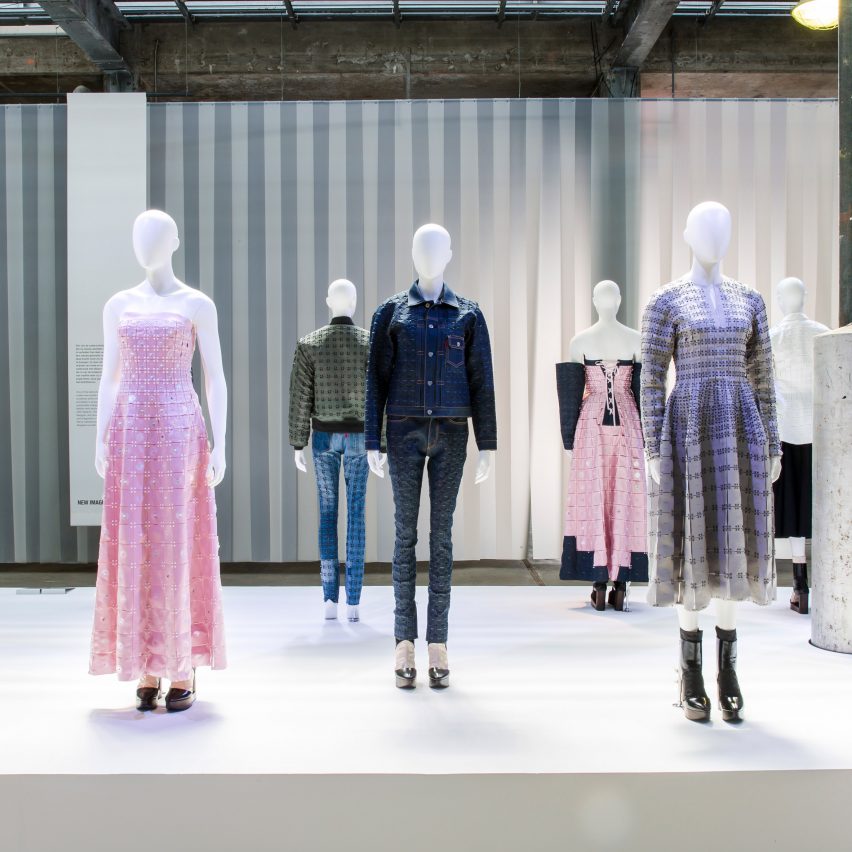
Freedom by Yuima Nakazato
Japanese designer Yuima Nakazato has developed a unique digital-fabrication system that allows you to make partial updates to garments, so your clothes could potentially last for a lifetime.
The system allows various materials like cotton, nylon and wool to be combined freely without the use of needles and threads.
"It's based on a 3D-border scan and laser-cutting techniques, which create these textile units with serial numbers – a sort of DNA," said Teunissen. "He presented this as a Haute Couture collection in Paris, but it's nice to see that you can also use the same technique with bomber jackets or jeans."
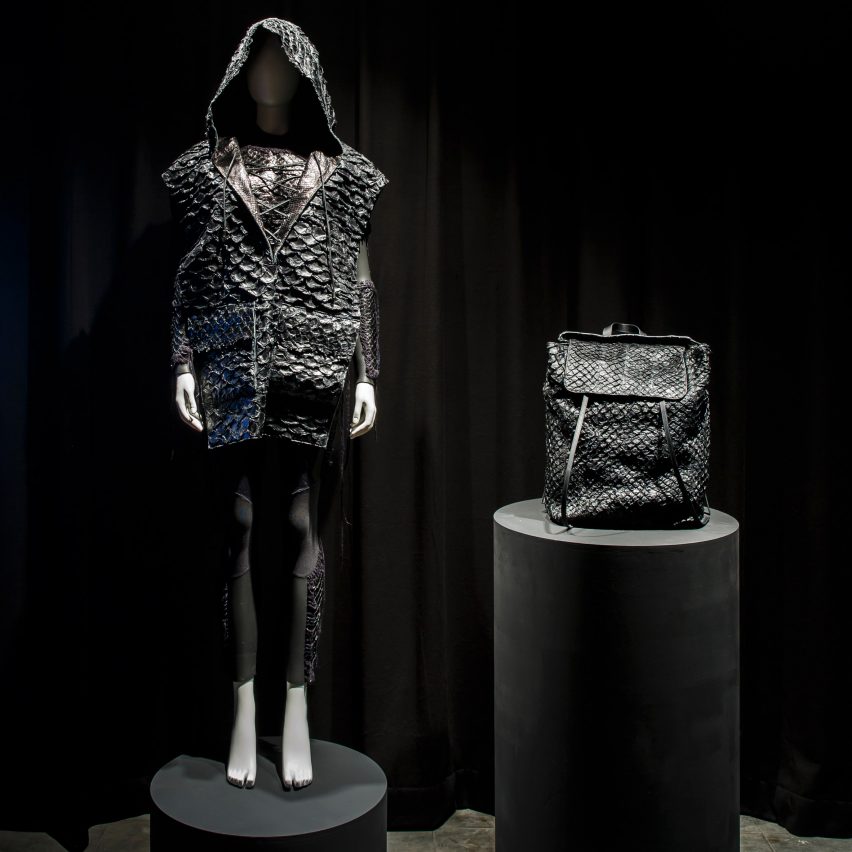
A21 by Osklen and Instituto E
For this line of accessories, the brand uses the skin of the pirarucu, one of the largest freshwater fish in the world.
"Osklen is a really important luxury brand in Brazil," said Teunissen. "For 10 years, designer Oskar Metsavaht has been working together with Instituto E, a foundation that supports local communities.
"This project involves a group of fishermen from the Amazon, who make their living from the Pirarucu. Until recently, they didn't use the fish's skin. Now, the leftovers are used for Osklen's bags and shoes. It has a really nice quality, and it's also very soft."
Osklen uses Pirarucu from the state of Rondonia, working with farmers to safely grow the fish while protecting the Amazon and supporting the local population. Compared to cattle farming, this model generates lower CO2 emissions, as farmers achieve 40 pre cent higher productivity than raising cattle on the same land.
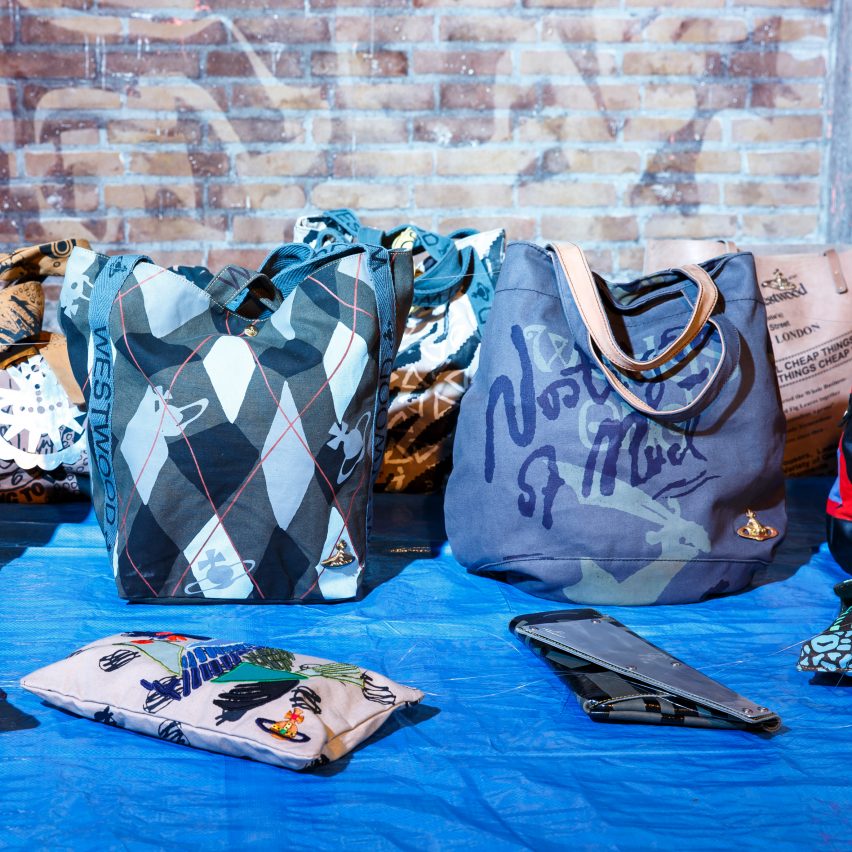
Handmade with Love by Vivienne Westwood
Handmade with Love is a site-specific installation featuring 100 Vivienne Westwood Ethical Fashion Initiative bags made from recycled canvas, reused roadside banners and recycled brass produced in Kibera, Nairobi's biggest slum.
"This is a project that Vivienne Westwood is undertaking with Ethical Fashion Initiative and the United Nations, working with local craftsmen in Nairobi, Kenya," said Teunissen.
"The project starts with what the workers there can already do – so the brand uses canvas and materials that are available there, and also local block printing techniques. Normally they have to learn when manufacturers come in, but instead Westwood adapts to them and gives them a sort of freedom."
"She has been doing this project for ten years and she has always said: 'This is not a charity, this is work.' It's about giving them a living."
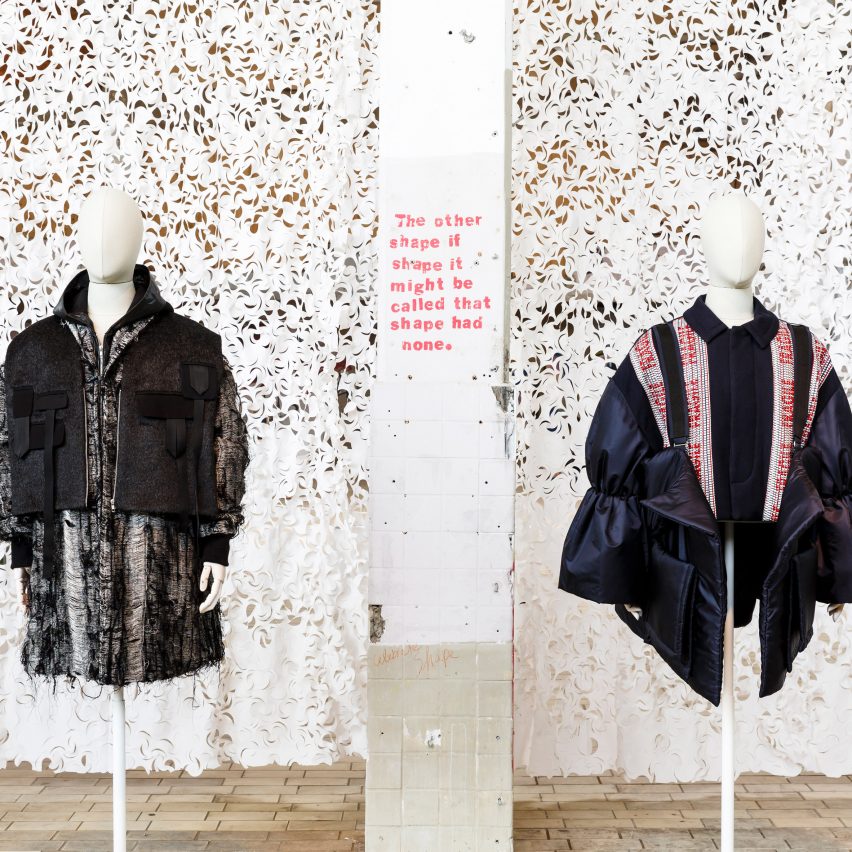
Conscious Contemporary Craft: Connecting Communities by Fondazione Zegna, San Patrignano and London College of Fashion
"This is a collaborative project by the Zegna Foundation working together with a youth rehabilitation community in San Patrignano and the London College of Fashion (LCF) with a women's prison in England," said Teunissen.
San Patrignano, located in Northern Italy, is a recovery community that rehabilitates youth through therapy. Hand weaving is one of the main activities in the community. Since 2013, Fondazione Zegna has been supporting the workshop in order to promote craftsmanship, support community development and modernise the artisanal techniques to meet fashion market expectations.
Meanwhile, LCF coordinates Making for Change, their fashion training and manufacturing unit within HMP Downview women's prison in England. The project aims to equip inmates with professional skills in a supportive environment.